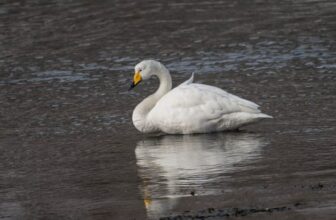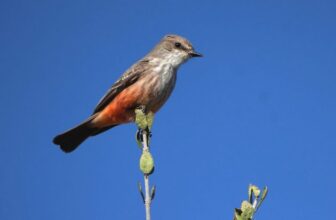
[adinserter block=”1″]
Last week, Peter Penning regaled us with tales of death-defying birding exploits. Almost being bitten by a Black Mamba? Geez, dude!
But there is another extreme to birding, one for which I have been slowly preparing over the past years. I am, you see, currently 65 years old. I can, I am happy to say, still climb hills and go pretty much wherever I choose. I just do it more carefully now. Still, I am aware that someday my mobility will become progressively more limited.
Fortunately, I have a backup plan.
Our home has a small (some would say tiny) garden, which I ensured would be on the south side, when we had it built. The dining room, shown in the photo below, has a straight view to this garden, with a birdbath at dead center. On days when I’m not out climbing hills, I sit with my bowl of cereal and cup of coffee and watch the show at that birdbath. And I have made sure that the garden is full of low-care plants, many of them natives, so I will be able to continue enjoying it even if intense gardening becomes too difficult for me someday.
When I started, what is now this garden was a brushy, vacant lot with no trees.
Because Morelia has a rather extreme wet-dry climate, the birdbath doesn’t get a lot of action during our wet summers. But during the winter, when our territory is inundated with wintering northern birds, it becomes our neighborhood’s avian social center. Just when northerners are storing their binoculars for the winter, I’m having breakfast with them by my side.
Also, as our dry, temperate winter morphs into our even drier, hot spring, some of our more interesting residents overcome their usual reticence to explore suburban gardens. My birdbath, you see, is the only reliable source of water on this side of the neighborhood.
So, how many birds could I hope to see, without leaving my central Mexican garden? Well, my eBird records give me a total of 86 species, so far. More than half of these can be considered garden regulars at some point of the year, including a few that never come into the garden itself, but can be seen regularly from the garden, soaring around the ridge a few blocks away. At the height of our rainy season, I am likely to see only a dozen or so species here. But in late spring, I could easily see two or three dozen in a single day, if I paid enough attention.
In January, the showiest birds tend to be our migratory warblers. On any given day I can count on seeing Wilson’s, Yellow-rumped (Audubon’s), Nashville, and Orange-crowned Warblers. Just last week, a Black-throated Gray Warbler started visiting, accompanied by a surprise Black-and-White Warbler. And in the past few years, a Virginia’s Warbler has also become a regular. (Our European readers may be unaware that [wood] warblers in the Americas are usually quite colorful, unlike the birds that bear the “warbler” moniker in the Old World.)
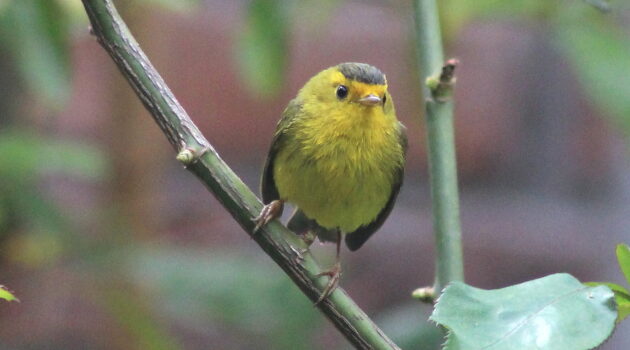
Wilson’s Warbler
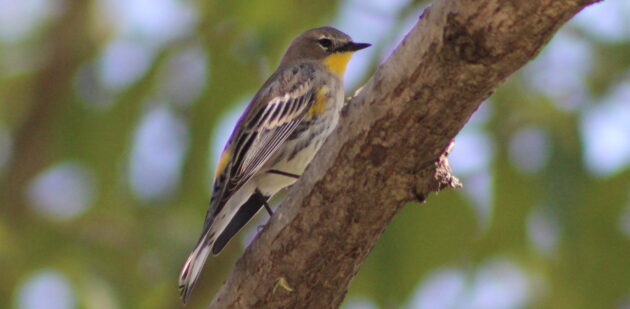
Yellow-rumped Warbler (Audubon’s)
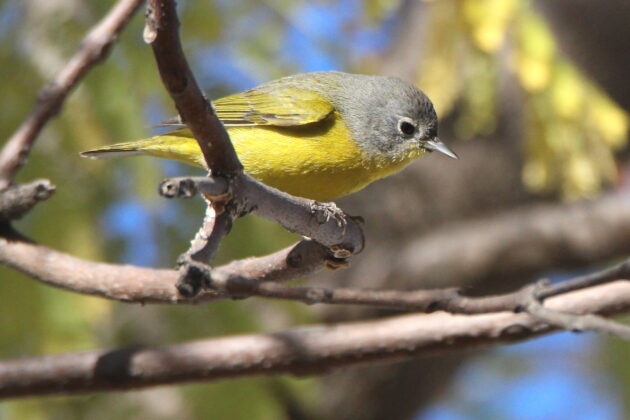
Nashville Warbler
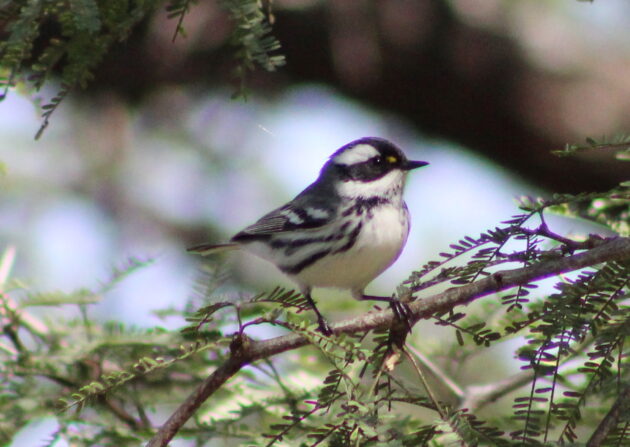
Black-throated Gray Warbler
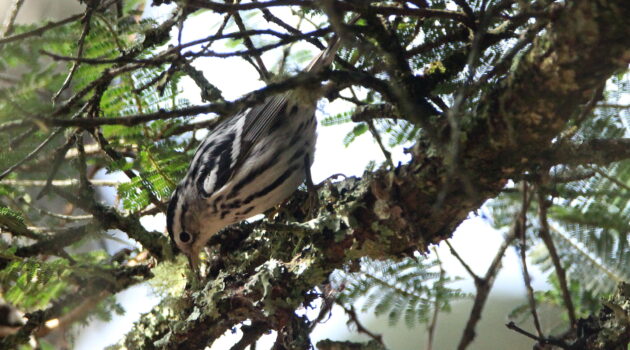
Black-and-White Warbler, showing its love of hanging head-down
Winter is also the season for beautiful Orioles and Tanagers, although resident Black-vented Orioles can appear year-round. I can expect to see Hooded and Bullock’s Orioles, as well as Western and Summer Tanagers, during peak season. Blue Grosbeaks, Indigo and Lazuli Buntings are reliable, though occasional, customers. And a gorgeous male Varied Bunting has shown up every day this week, to remind me that those are also spring regulars. Warbling Vireos are almost a trash bird in my winter garden. Their colors are muted, but the odd expression their open-mouthed water drinking produces makes them an amusing visitor.
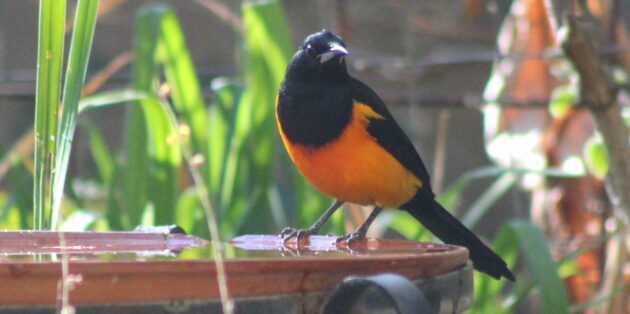
Black-vented Oriole, at my birdbath
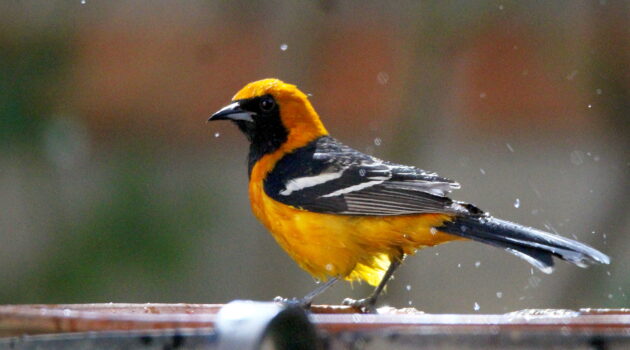
Hooded Oriole
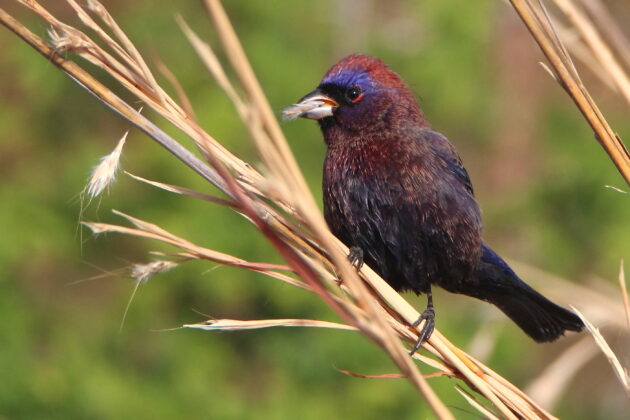
A Varied Bunting, elsewhere
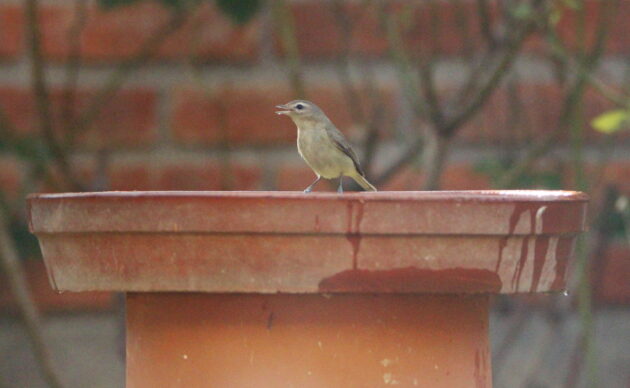
Warbling Vireo
A few birds visit the garden, but never the birdbath. Hummingbirds come for the native salvias I’ve established there over the years: Broad-billed Hummingbirds year-round, Berylline Hummingbirds much of the year, and of late, a lovely Violet-crowned Hummingbird has been a regular presence. They all go crazy when my Jacaranda tree is in bloom. Golden-fronted Woodpeckers prefer the Jacaranda trunk. Northern Beardless Tyrannulets never approach the ground, but I often hear their piercing “wheek!” call in winter.
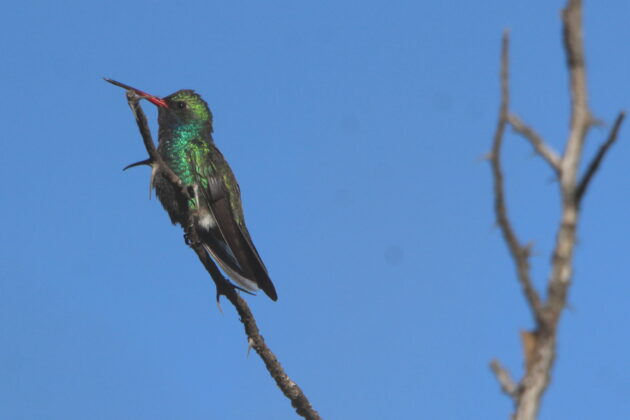
Broad-billed Hummingbird
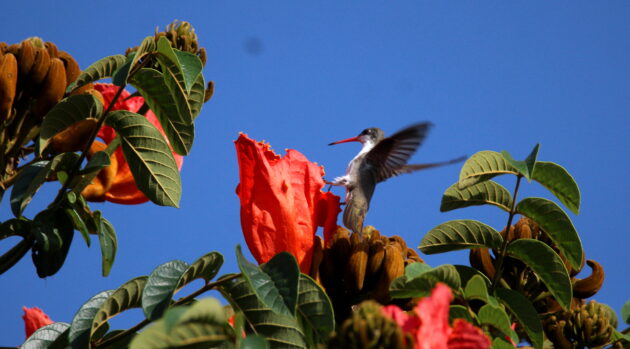
A Violet-crowned Hummingbird, feeding on a tree that I unfortunately do not have in my garden.
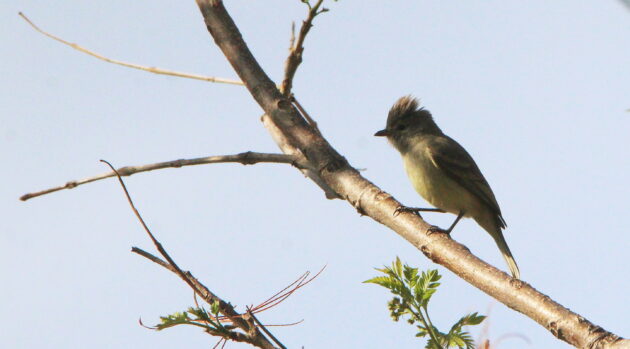
Northern Beardless Tyrannulet
As for Mexican endemics, the Blue Mockingbird is certainly a dominant presence here from January through August. (They come for the water, and stay for the fruits the garden produces.) Bronzed Cowbirds and Rufous-backed Robins, as well as Groove-billed Anis, also come in spring for the fruit, with a drink of water on the side. But in a dry year like this one, even the most shy natives could appear. I’m hoping for Orange-billed Nightingale-thrushes and Spotted Wrens, at the very least.
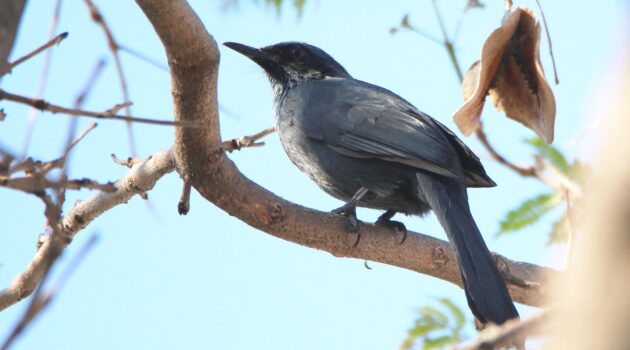
A Blue Mockingbird visiting my garden
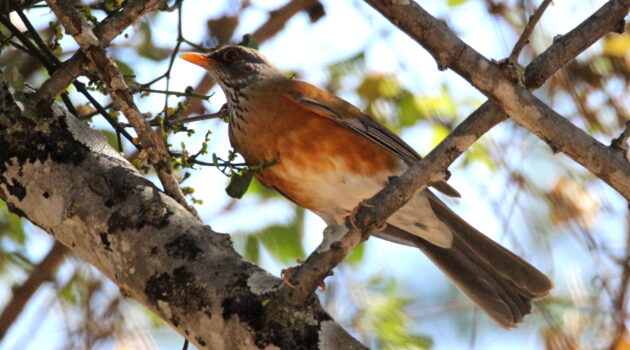
A Rufous-backed Robin, elsewhere
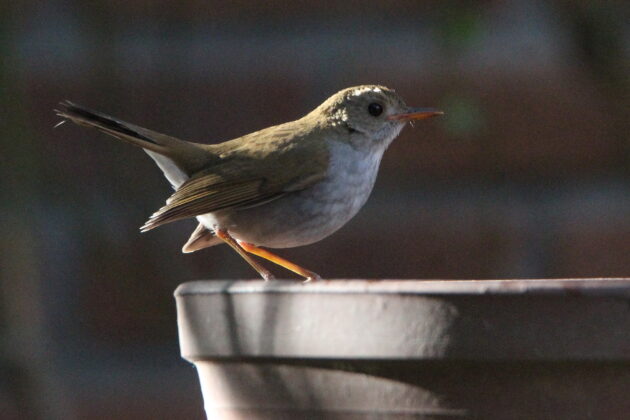
An Orange-billed Nightingale-Thrush came for a drink
So that’s my “birding retirement plan”. It would be interesting to read in the comments below if any of you have done the same. If you haven’t yet, you could even consider doing so in a warmer, birdier climate, like mine.
[adinserter block=”1″]
Source link



